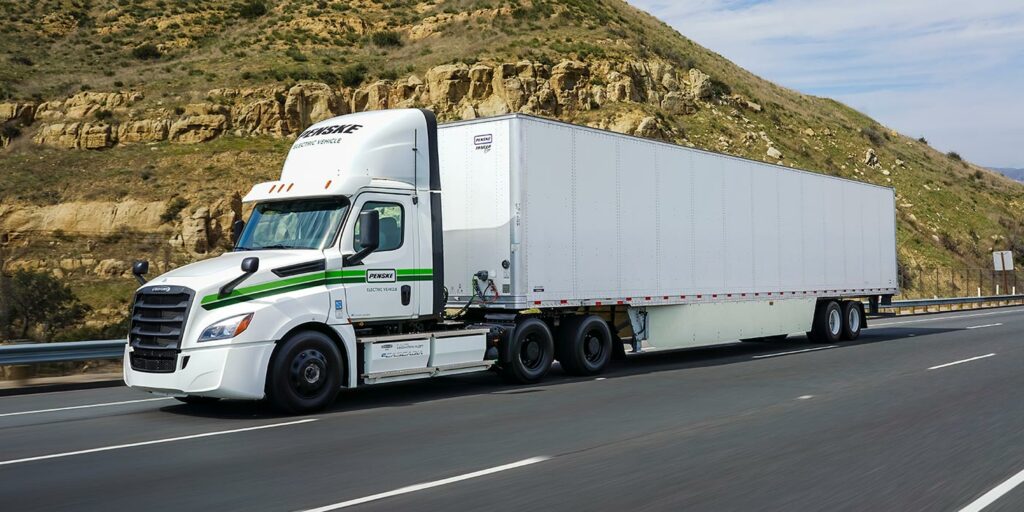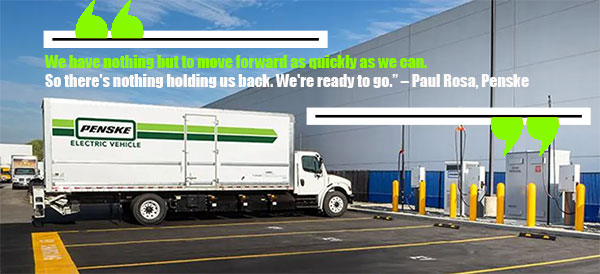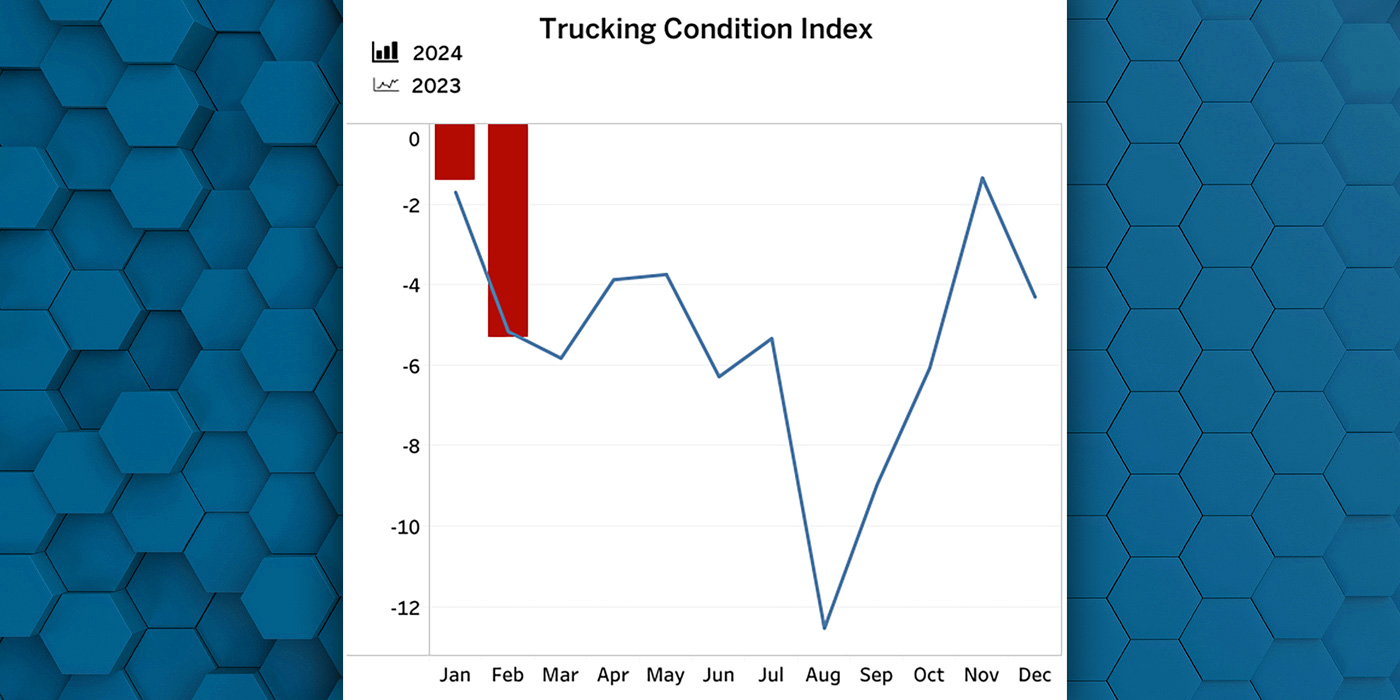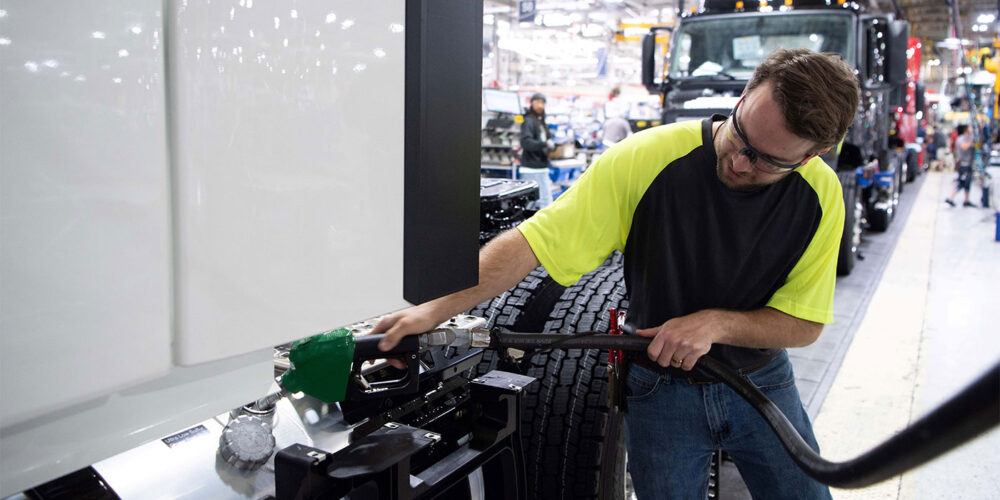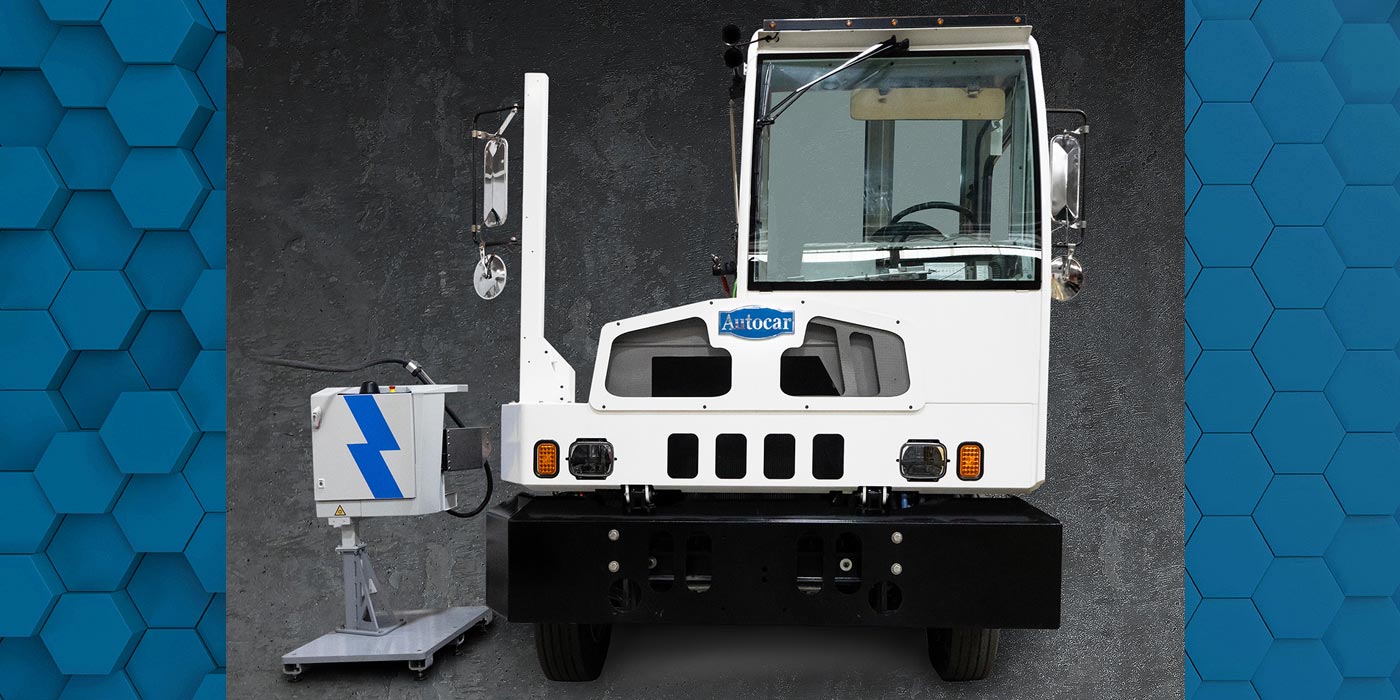The year 2020 was the first time that fleets began to take delivery of electric trucks as part of pilot programs. Since we have (somehow) already raced past the midpoint of 2021, FE checked in with fleets to see how their experiences have been with these trucks; how the trucks have held up compared to their expectation; and whether they will consider investing further in electrification, among other burning questions.
In this entry in the series, we spoke with Penske Truck Leasing, which has been testing several electric trucks in its fleet, with the Freightliner eCascadia and the Hyliion 6X4HE Class 8 hybrid being among them.
1: What are the key lessons you have learned about running electric trucks?
“Our experience has been tremendous. It has been amazing,” says Paul Rosa, senior vice president of procurement and fleet planning at Penske. “We knew going in that we had to learn what the challenges were going to be in order to feel that we had a successful, easy experience with the new technology. It can’t all go well, so you have to find the trouble spots.
“The important thing we had to do is put the trucks in all different types of routes, because you don’t want to just test the same route or the same kind of routes all the time; you want to venture out.”
Rosa says Penske tested routes with various numbers of stops, heavier and lighter loads, and several other changes to test the vehicles’ capabilities and range.
“One of the vehicles can go out with only half the range used and then come back with 50% state of charge and see how fast that one charged up,” he shares as an example. “The applications are plentiful, and we keep evaluating different ones as we put more units with different customers or the same unit with new customers. It’s all over the board. We have to understand all applications or as best we can, given the technology as it sits today.
“So we go out to the max range that it can do—for this example, we’ll just say it’s 150 miles—we’ll have units going out 150 miles, some going out 130, some going out 100, some going out 80. Then we switch up and we have them going into different topographies, different areas where there are higher hills and so on with the same range.”
2: How have the trucks performed compared to expectations?
“You always get excited and hope that a new technology is going to be better than what you have today. Right? So our expectations going in were that an electric vehicle was going to present better than ICE [internal combustion engine],” Rosa answers.
He adds that those expectations were exceeded.
“Even the prototype units and then the next generation or the first pre-production units are still performing very, very well compared to ICE, which exceeds our expectation,” Rosa elaborates. “So I’m very pleased with where we are in our whole evaluation project, the way that the trucks have performed from a power standpoint, from a driver comfort standpoint, from how quiet they are. Those are the expectations that were beyond what we thought. We just wanted it to perform under the applications that it is typically in, if it was a diesel unit or gas unit, and those were met right out of the gate, and then you get into all these other benefits. I’m very happy with where we are with the current version of the equipment.”
Rosa goes on to highlight the importance of keeping drivers happy, and says the electric trucks can achieve this goal.
“You get driver retention when you make their driving environment better—whether it be just in the cab, their comfort, their health, all those things mixed up in one. These vehicles are smoother, easier and quieter to drive. I can go on and on and on about all the benefits that the drivers had. So it’s really going to help the driver, which I think is really important.”
3: How has the charging experience been?
“You have to work on your infrastructure knowing the truck is going to be several months out,” Penske’s Rosa advises. “We put in our infrastructure back in 2018 to ‘19.”
You never know, Rosa says, how long this equipment will take to arrive and be installed—just look at what’s going on today with the microchip shortage and its effect on manufacturing, for example.
“What people also don’t realize is what you have to go through just to get prepared to put in the infrastructure. You’ve got to work with your local municipality to get the permits. You’ve got to work with utility companies to get the site assessed to see if it even has the capability of the power that you need. So there are so many things that have to line up for somebody to even get infrastructure started.”
4: Have you been persuaded to invest further in electric trucks?
The fleets interviewed for this series were unanimous in their enthusiasm for continued investment in EVs. Rosa describes Penske as “all in.”
“We’re going to do this,” he says. “We’re going to do this as fast as we can, where it makes sense, when it makes sense, because it’s what we need to do as a company, it’s what we desire to do for the environment. And it’s what our customers that lease vehicles from us want as well.
“So we’ve got to be prepared. We’ve got to get more of our locations ready with infrastructure. We’re getting more vehicles. We’re going to have to have the infrastructure there to support them. We don’t have a choice at this point. We are in the game, the game has started and the clock is moving fast. So we have nothing but to move forward as quickly as we can. So there’s nothing holding us back. We’re ready to go.”
Previously in this series: Six electric truck questions with DHE
Five electric truck questions with Schneider

